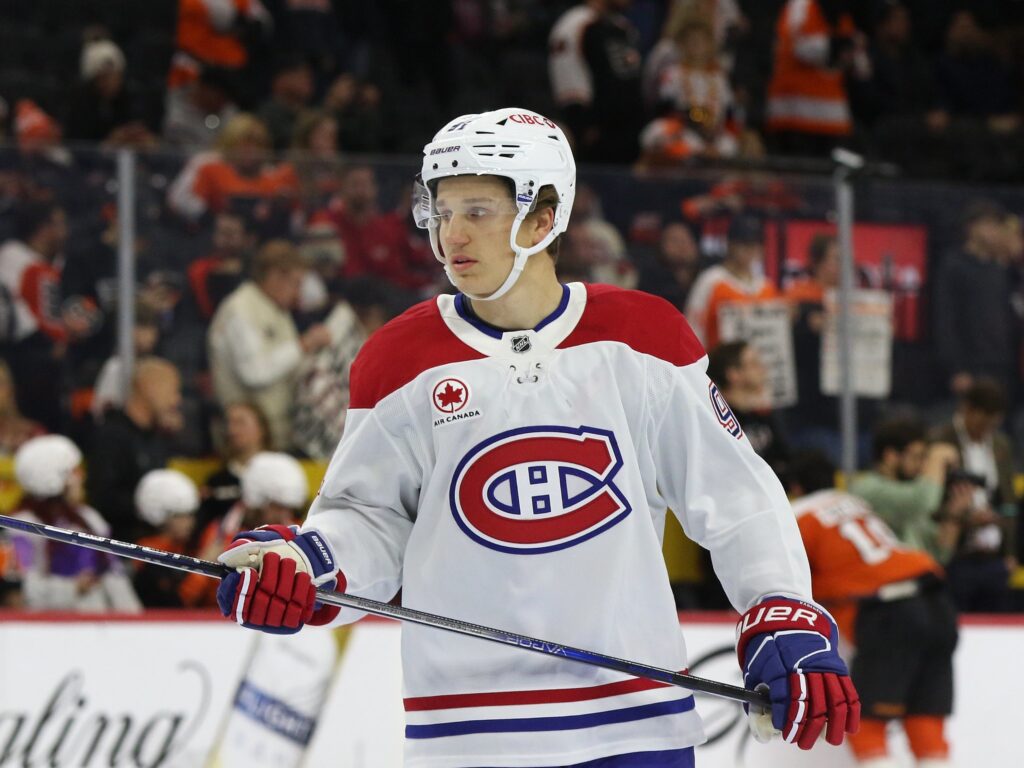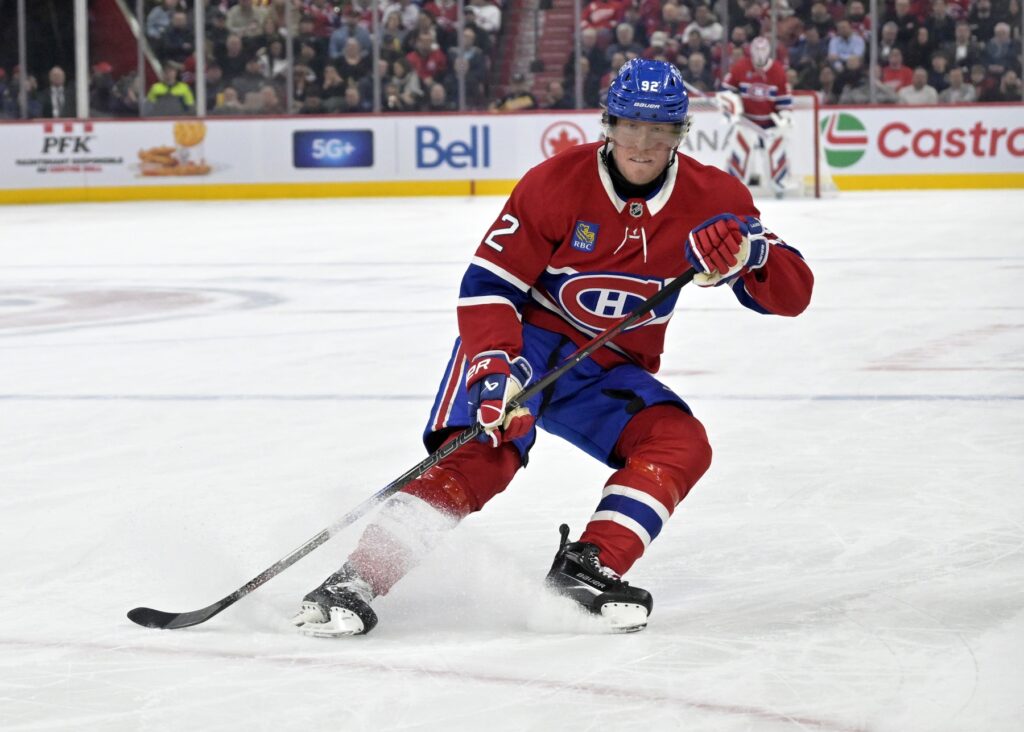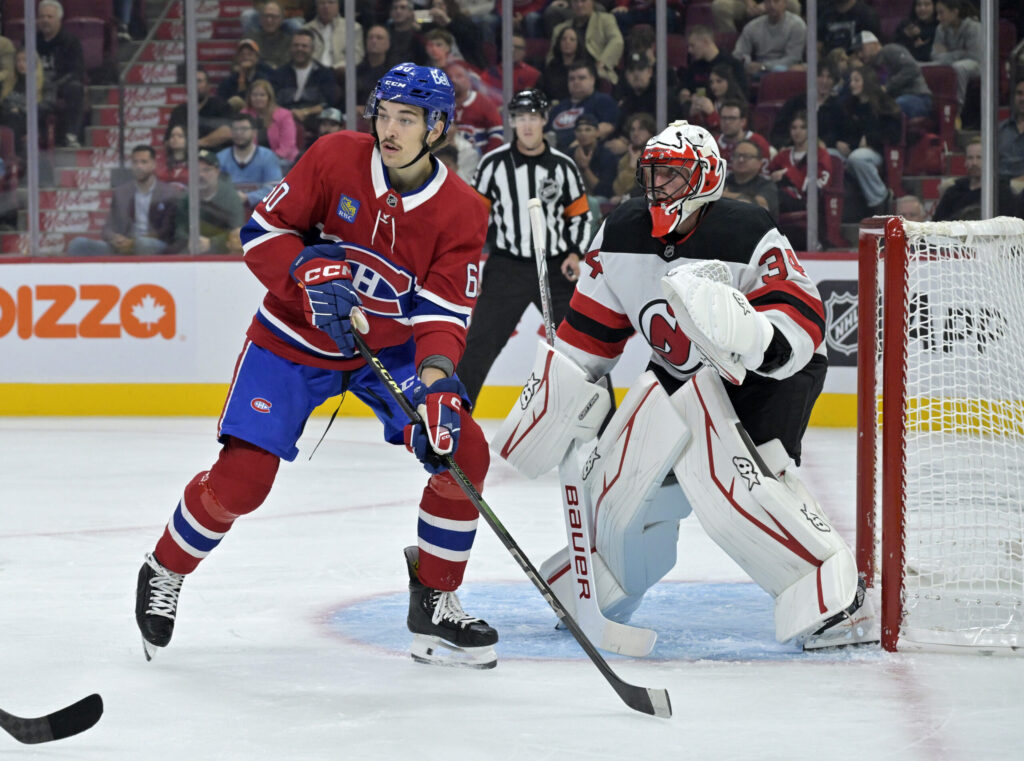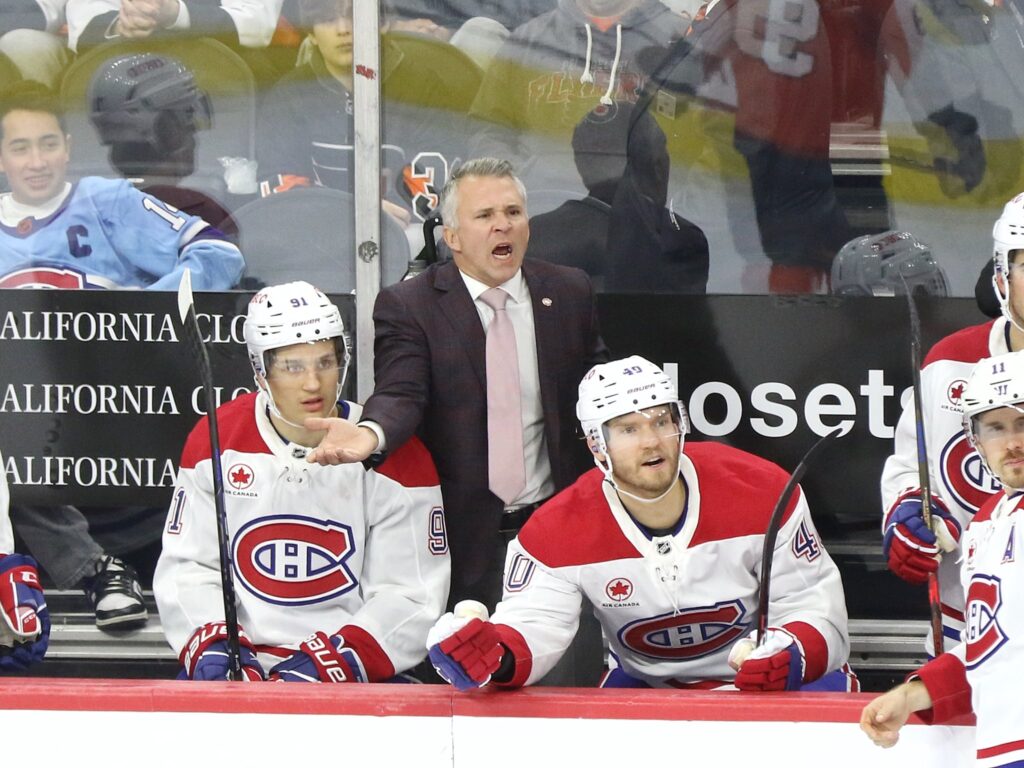As the scent of hot dogs and stale popcorn begins to replace the smell of freshly cut grass, another NHL training camp is drawing to a close. For the Montreal Canadiens, the end of the preseason signifies a return to a familiar problem, albeit one with a refreshing new twist. For years, the question was who could capably fill out the NHL roster. Now, as the team trims the fat and gets down to the final cuts, head coach Martin St. Louis is facing what he rightly calls a “good problem to have.” With a roster now sitting at 27 players and four more difficult decisions to make before the October 8th opener against the archrival Maple Leafs, the final days of camp are less about finding bodies and more about finding chemistry. The battles are fierce, not for a spot on the team, but for a meaningful role within it.
Also on the EDGE – Montreal Canadiens’ Youth Movement Dominates Preseason Narrative
The Finnish Phenom and the Final Chair
While most of the lineup card is written in ink, there’s one glaring spot still penciled in: the final forward position. In the high-stakes game of musical chairs that is an NHL training camp, several hopefuls are circling, but it appears 22-year-old Finn Oliver Kapanen is closest to finding a seat.

Recent practice lines, the truest tea leaves a hockey writer can read, placed Kapanen in a tantalizing position on a potential third line, flanked by regulars Alex Newhook and the highly-touted rookie Ivan Demidov. This isn’t a fluke. Kapanen has methodically impressed the coaching staff and management throughout camp, not with flashy, high-risk plays, but with a steady, mature game that belies his age. His versatility to play a two-way game has been his calling card, and his hockey intelligence has been the exclamation point.
What has truly set Kapanen apart, however, is what’s between the ears. St. Louis glowingly described the young Finn as possessing an “NHL-level computer,” a high compliment from a Hall of Fame player who thought the game on a different plane. Teammate Alex Newhook echoed the sentiment, praising Kapanen’s innate ability to process the game and consistently make the right play, regardless of the zone. He’s the type of player who makes his linemates better—a quiet conductor rather than a flashy soloist.
While Kapanen was taking reps with the main group, the other contenders—Owen Beck, Florian Xhekaj, Joseph Veleno, and Samuel Blais—were relegated to skating as extras. It’s a clear indication of the current hierarchy, but St. Louis is a coach who values constant competition. He was quick to emphasize that nothing is set in stone, noting that the “race” for roster spots doesn’t end when the puck drops on opening night; it’s an ongoing evaluation. For now, though, Kapanen has the inside track, and the final forward spot is his to lose.
Throwing the Lines in a Blender
If the bottom of the forward group is about a single-man race, the middle-six is a full-blown chemistry experiment. St. Louis has his bookends firmly in place. The top line of Cole Caufield, Nick Suzuki, and Juraj Slafkovsky is the engine of the offense and will remain untouched. Likewise, the veteran fourth line of Brendan Gallagher, Jake Evans, and Josh Anderson provides a known quantity of grit, energy, and defensive responsibility. It’s the second and third lines that have become the coach’s chalkboard for tactical tinkering.
The catalyst for the most recent shuffle was a sobering preseason performance against Toronto. The then-projected second line of Patrik Laine, Kirby Dach, and Ivan Demidov looked disjointed and was a defensive liability, finishing the game with an ugly cumulative minus-9 rating. That kind of defensive hemorrhage is unsustainable, and St. Louis acted swiftly.
The result was a significant shake-up:
- New Second Line: Patrik Laine – Kirby Dach – Zack Bolduc
- New Third Line: Alex Newhook – Oliver Kapanen – Ivan Demidov

The logic behind elevating Zack Bolduc to the second line is compelling. While Laine provides the elite finishing and Dach the size and playmaking, the line was missing a relentless puck-hound and a defensively conscious motor. Bolduc, who has been a standout revelation at camp, provides exactly that. His speed is a weapon on the forecheck, his work ethic is non-negotiable, and his two-way responsibility can provide a safety net for his more offensively-inclined linemates. Teammate Lane Hutson has been effusive in his praise for Bolduc, and it’s clear his impact has resonated throughout the dressing room. He isn’t there to be a passenger; he’s there to be the engine.
Demoting a prized rookie like Demidov might seem like a step back, but it could be a brilliant strategic move. On the second line, the 19-year-old faced immense pressure to be a primary driver of play against tough competition. Now, slotted with Newhook and Kapanen, that burden is shared. It’s a line with skill, but one that will likely face more favorable matchups. This move allows Demidov to find his NHL legs without the crushing weight of top-six expectations, all while playing with two intelligent players. The move isn’t without its risks; both Newhook and Kapanen have had underlying defensive metrics that raise eyebrows. But for a coach still in the experimental phase, it’s a calculated gamble.
When asked about the new combinations, St. Louis was candid. “I don’t know… that’s why we’re trying it,” he admitted. It’s a refreshingly honest take. He’s not searching for the perfect line on paper; he’s searching for the trio that can execute a complete, 200-foot game when the lights are brightest.
Defining Roles, Not Just Rosters
Beyond the simple binary of making the team or getting cut, this camp has been about defining and refining specific roles. No player better exemplifies this than Alex Newhook. Acquired for his speed and offensive potential, Newhook is being molded into a more complete player, with a new emphasis on the defensive side of the puck. A significant part of this evolution involves becoming a key penalty killer. It’s a role he’s familiar with from his pre-professional days, and he believes his speed can be a disruptive asset when shorthanded, turning cleared pucks into offensive threats.
Also on the EDGE – Centre of Attention: The Battles That Will Define the Montreal Canadiens’ Season
Recognizing that a key component of a defensive role is winning crucial draws, Newhook dedicated his offseason to improving at the faceoff dot. In a move that should thrill Canadiens fans, he sought out one of the greatest faceoff specialists of the modern era for advice: former Bruins captain Patrice Bergeron. That level of dedication and humility—seeking wisdom from a legendary rival—speaks volumes about Newhook’s commitment to his new responsibilities.
For those who won’t break camp with the big club, like the promising Owen Beck and the rugged Florian Xhekaj, the message is clear: this isn’t the end. They are expected to be foundational pieces for the AHL’s Laval Rocket, where they will log major minutes in all situations and continue their development, waiting for the inevitable call-up.

A Sight for Sore Eyes on the Blue Line
While the forward group has been a fluid situation, the defensive corps received a major boost with the return of Noah Dobson and Kaiden Guhle to full practice. Both defensemen had been sidelined and listed as day-to-day with nagging groin injuries, a frustrating setback for two pillars of the Canadiens’ blue line. Their presence on the ice, skating with the main group, was a welcome sight. However, the coaching and medical staff are exercising caution. While both participated fully in drills, neither has been officially cleared for game action just yet. Their health will be the final, crucial piece of the roster puzzle as the team prepares to head into the 82-game grind. The final roster is taking shape, forged in competition and tempered by strategy. The problems may be “good” ones, but they are problems nonetheless, and Martin St. Louis’s solutions will define the opening chapter of the Canadiens’ season.
Created with the aid of Gemini AI
